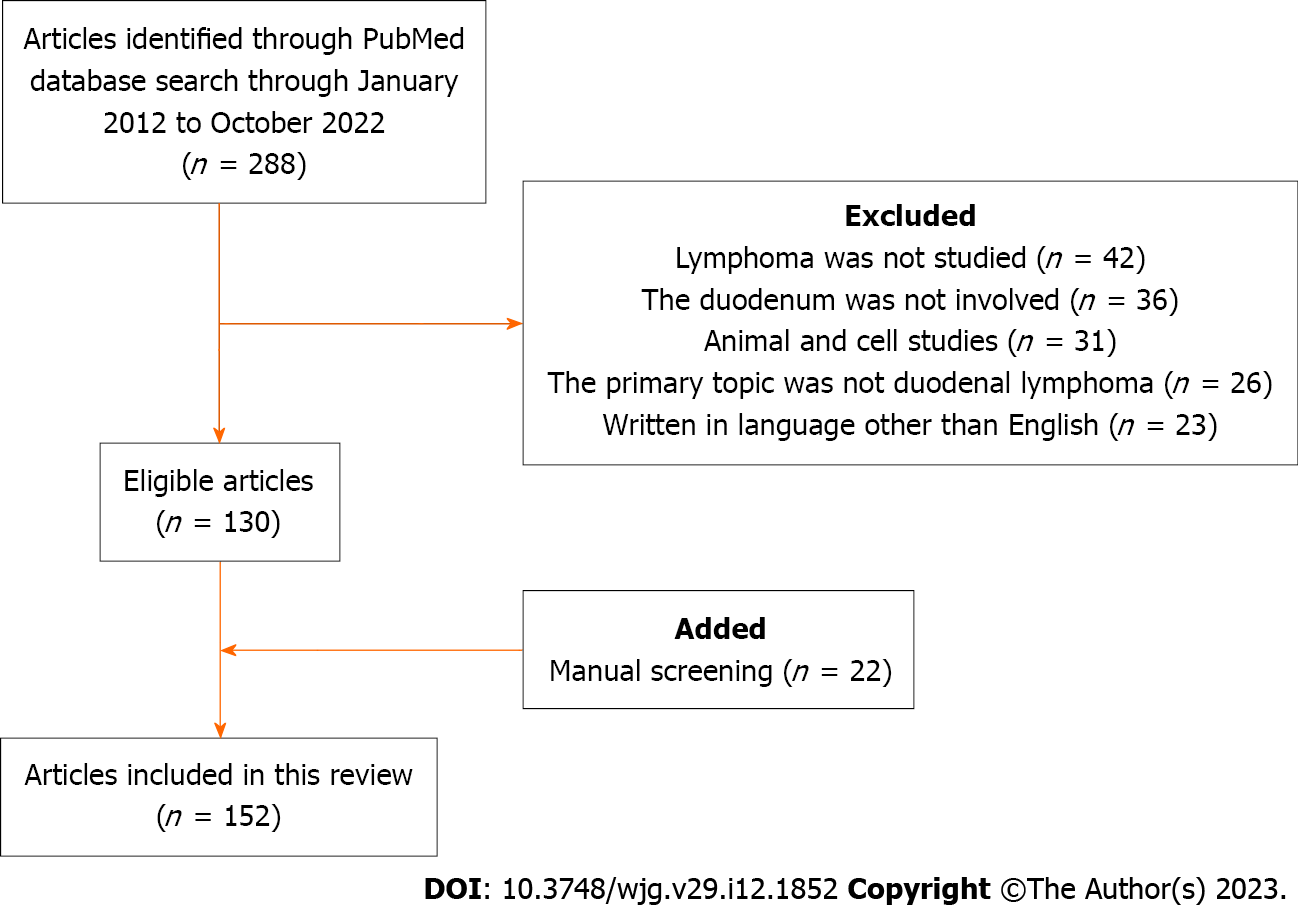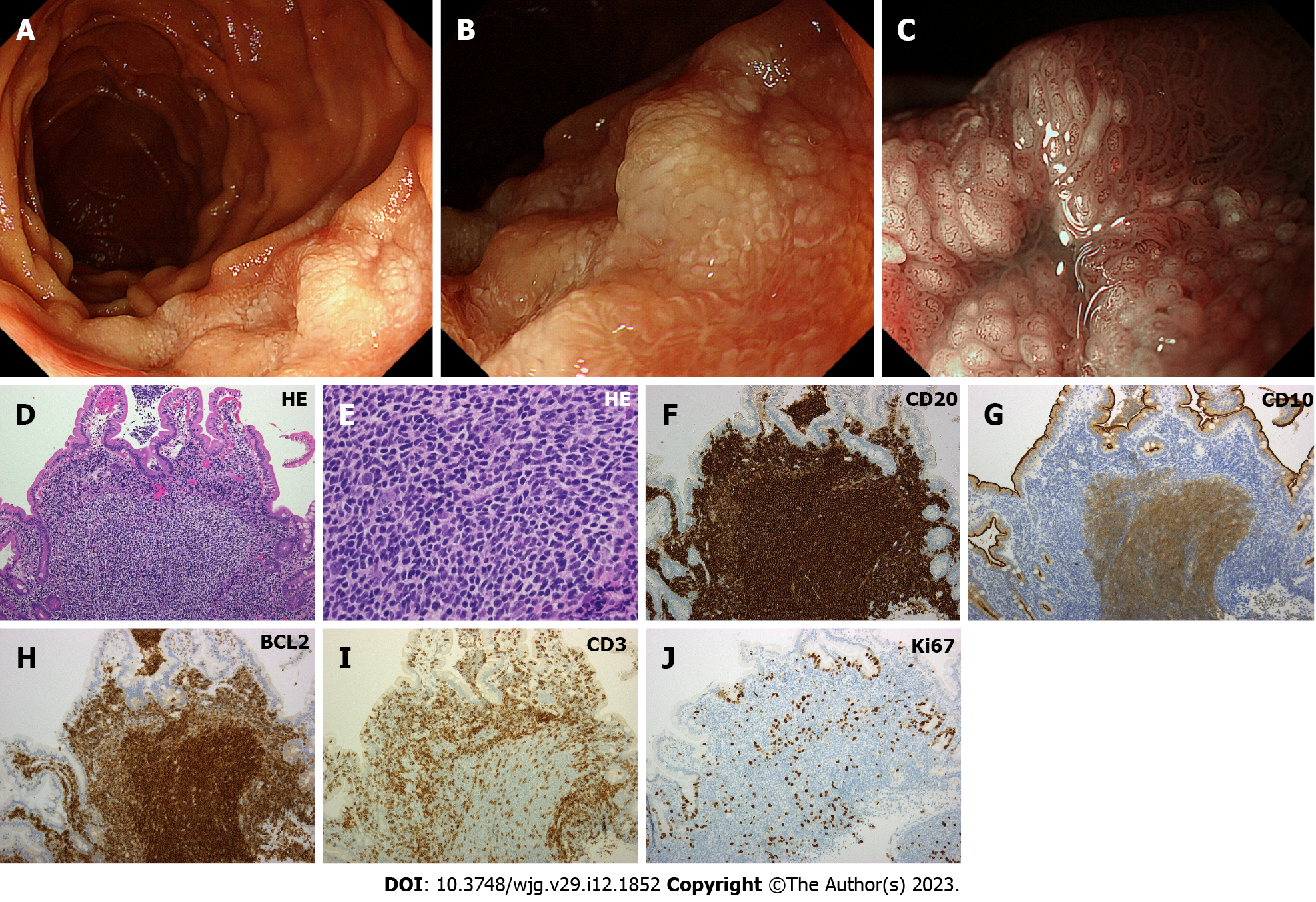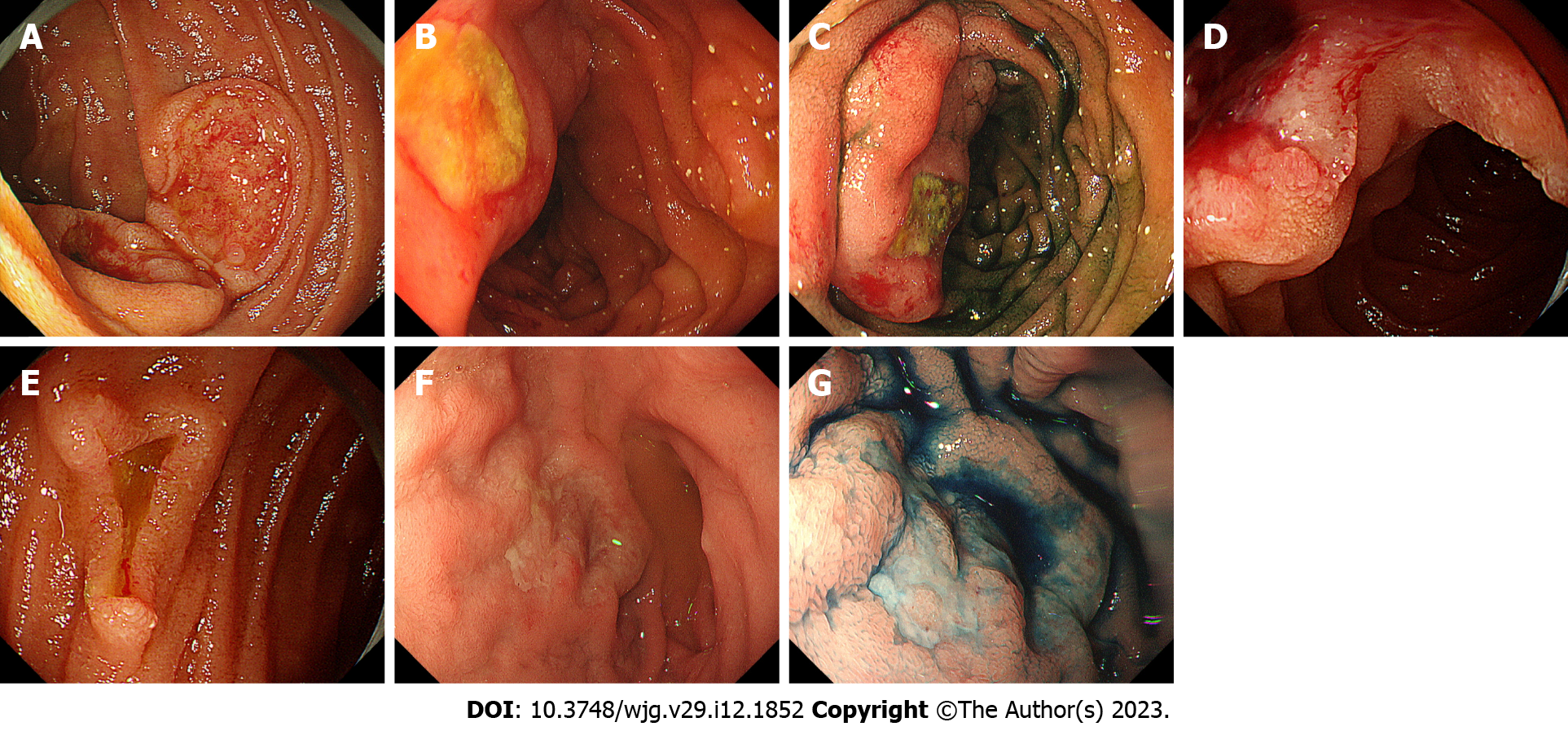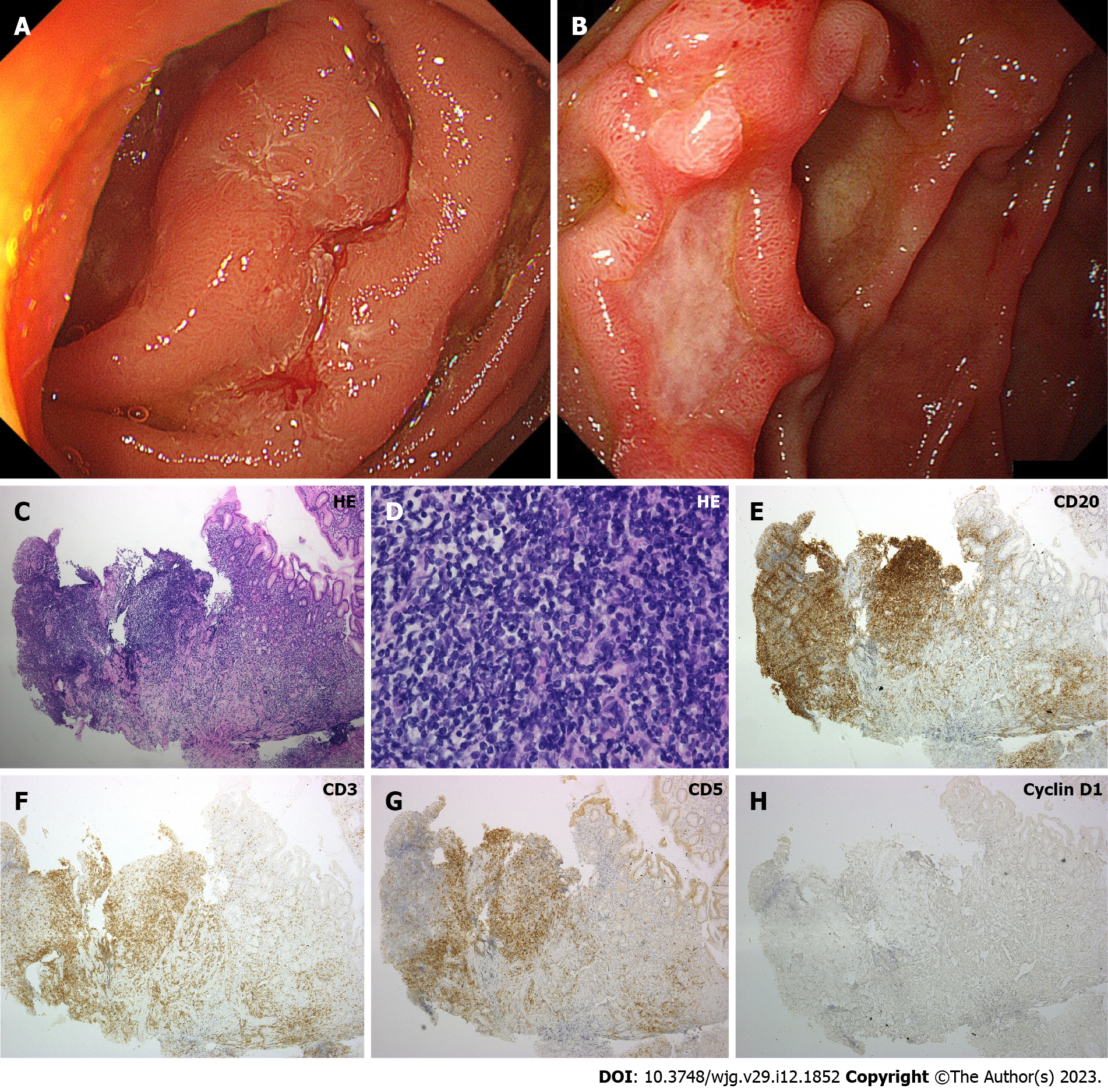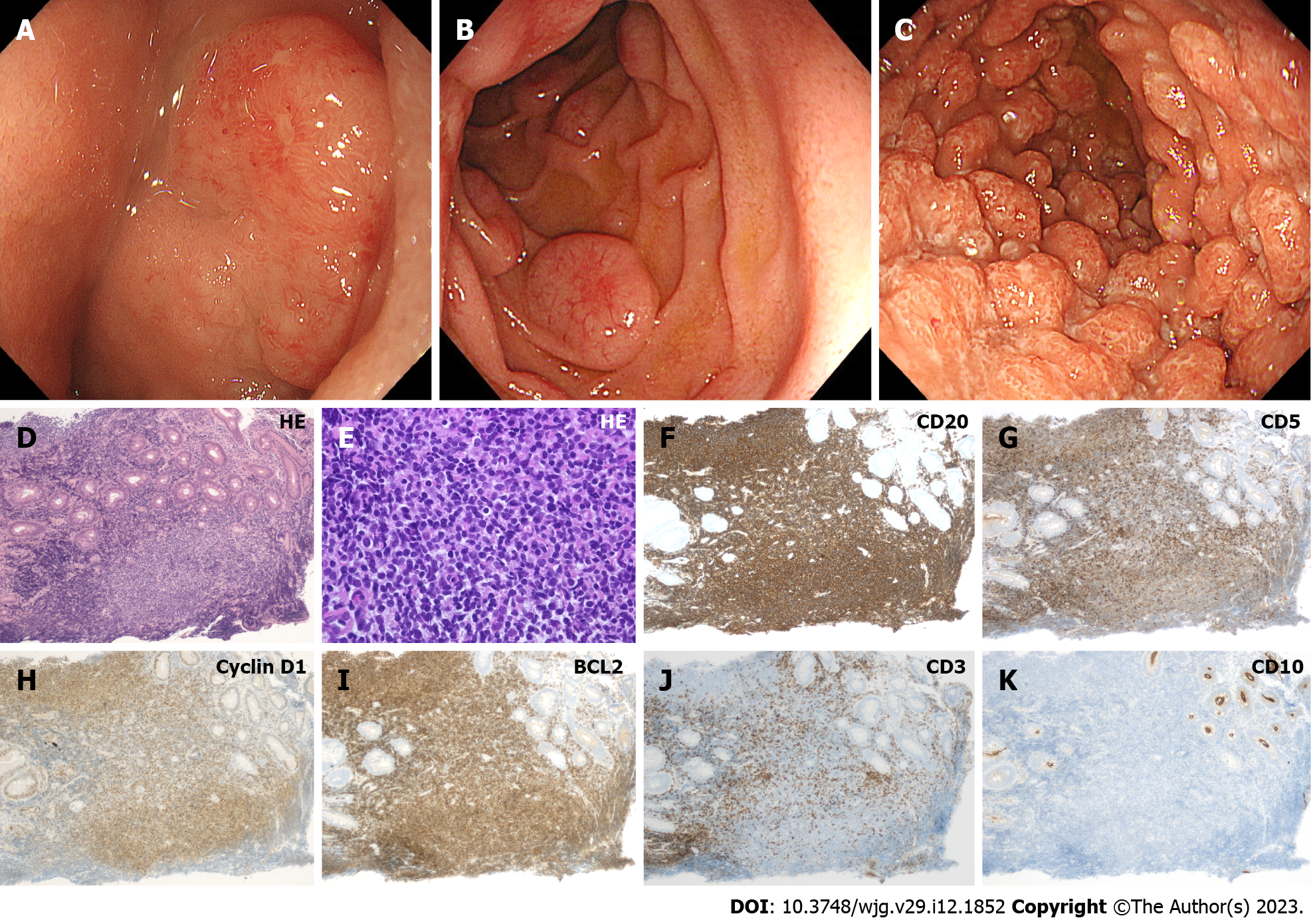Copyright
©The Author(s) 2023.
World J Gastroenterol. Mar 28, 2023; 29(12): 1852-1862
Published online Mar 28, 2023. doi: 10.3748/wjg.v29.i12.1852
Published online Mar 28, 2023. doi: 10.3748/wjg.v29.i12.1852
Figure 1 Flow diagram summarizing the identification, screening, eligibility, and exclusion processes of the literature search.
Figure 2 Representative endoscopic images of duodenal follicular lymphoma (Cases 1 and 2).
A: Case 1. Esophagogastroduodenoscopy reveals typical feature of follicular lymphoma showing multiple whitish granules in the descending portion of the duodenum; B: Case 1. Video capsule enteroscopy shows follicular lymphoma lesions in the jejunum; C: Case 2. Another case of duodenal follicular lymphoma; D: Case 2. Magnifying observation with narrow band imaging shows white deposits.
Figure 3 Representative endoscopic and pathological images of duodenal follicular lymphoma (Case 3).
A: Esophagogastroduodenoscopy shows thick, white mucosa in the descending portion of the duodenum; B: Magnifying observation reveals enlarged whitish villi; C: Magnifying observation with narrow band imaging emphasizes enlarged villi with elongated vasculature on the surface; D–J: Pathological images of the biopsied specimen. Hematoxylin and eosin stain shows medium-sized tumor cells that form follicular structures and diffusely invade into the villi (D: × 10, E: × 40). Lymphoma cells are positive for CD20, CD10, and BCL2, while negative for CD3. Tumor cells are sparsely positive for Ki67. HE: Hematoxylin and eosin.
Figure 4 Representative endoscopic images of diffuse large B-cell lymphoma (Cases 4–7).
A: Case 4. Esophagogastroduodenoscopy reveals duodenal lesions showing auriculate ulcer mounds; B and C: Case 5. A protruded, ulcerative lesion is seen in the duodenum; C: After indigo carmine spraying; D and E: Case 6. Multiple ulcerative lesions in the duodenum; F and G: Case 7. Irregular-shaped, shallow ulcers in the duodenum.
Figure 5 Representative endoscopic and pathological images of duodenal MALT lymphoma (Cases 8 and 9).
A: Case 8. A protruded lesion mimicking hypertrophic folds is observed in the duodenum; B: Case 9. Esophagogastroduodenoscopy shows ulcerative tumor in the duodenum; C–H: Pathological images of Case 9. On hematoxylin and eosin stain, small to medium-sized lymphoma cells are predominant (C: × 10, D: × 40). Neoplastic cells are positive for CD20, while negative for CD3, CD5, and Cyclin D1. HE: Hematoxylin and eosin.
Figure 6 Representative endoscopic and pathological images of duodenal mantle cell lymphoma (Cases 10–12).
A: Case 10. Elevated lesion with erosions on the surface in the duodenum; B: Case 11. Typical morphology of mantle cell lymphoma showing multiple lymphomatous polyposis in the duodenum. Subepithelial lesion-like protruded lesions accompanying dilated vasculature on the surface are seen; C: Case 12. Numerous, diffuse polypoid lesions in the duodenum; D–K: Pathological images of Case 12. Lymphoma cells retain a homogeneous pattern of cell size on hematoxylin and eosin stain (D: × 10, E: × 40). Cells are positive for CD20, CD5, Cyclin D1, BCL2, while negative for CD3 and CD10. HE: Hematoxylin and eosin.
- Citation: Iwamuro M, Tanaka T, Okada H. Review of lymphoma in the duodenum: An update of diagnosis and management. World J Gastroenterol 2023; 29(12): 1852-1862
- URL: https://www.wjgnet.com/1007-9327/full/v29/i12/1852.htm
- DOI: https://dx.doi.org/10.3748/wjg.v29.i12.1852









